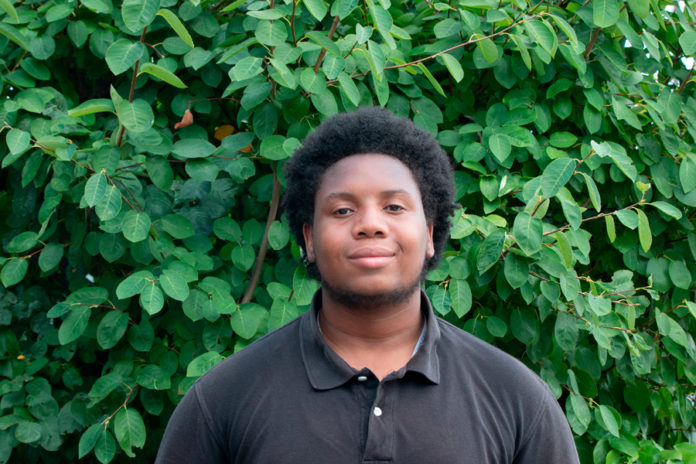On a summer afternoon in North Philadelphia, temperatures soar to near 100 degrees, with a heat index a dozen degrees hotter still. Residents who have suffered countless struggles for a year and a half during the pandemic have to confront one more: The choice to be outside in the heat and potentially risk their health, or, if they have an air conditioner, stay inside and pay higher electricity bills.
This summer, a partnership program between the community and Drexel University resulted in 100 cooling structures installed on 5 blocks, including benches with umbrellas, flower planters, and water features.
But the effort did not stop there. Je’von Freeman, a college sophomore from Mt. Airy, was one of three young adults who worked as Civic Scientists alongside the project, conducting data collection that would help build the case for more investments in the future. Je’von and his colleagues spent 8 weeks of sweltering summer days walking around the neighborhood with both stationary and mobile temperature sensors provided by Drexel University, collecting temperature data at various locations and times of day. The data collected by Je’von and the other Civic Scientists will be used to show where and how climate injustice persists, in concrete and actionable terms. The data from areas equipped with cooling structures and tree canopy will be compared with the temperatures on blocks without those advantages and will drive the strategy and advocacy for future investment.
Impacto sat down with Je’von, to speak with him about the work he has done with and for the community.
Je’von, you’re from Mt. Airy, not Hunting Park. What made you want to work in our neighborhood this summer?
Doing this work day-to-day really brought the inequalities to the forefront. My neighborhood has a lot of trees, and there is a lot more shade to go around. You can go for a walk, and sometimes it does get hot, but it’s mainly pleasant. Here in North Philadelphia, there’s so much concrete and blacktop, and not enough trees. In low-income neighborhoods, it’s hard for people to change their environment. I feel like a lot of people notice the issue is there, but they don’t know how they can work toward fixing it, and I’m able to help them work toward that solution. All the neighbors who received benches, umbrellas, and planters were so appreciative – they universally loved the little oasis of shade in an otherwise barren stretch of heat.
What were some of the things you learned from Drexel University, as the research partner on this project?
They guided us in finding the proper locations where we could get good contrast in the temperature data were collecting. There are some blocks that do have good tree cover, and others that don’t. We tried to set up sensors on myriad blocks so we could compare the data on each one. They also helped fix technology glitches in the apps that were used to record the data, to make sure we could properly and thoroughly capture the data for analysis later on.
What stood out to you most, about the importance of this project?
I remember an older woman on one block, who asked when we were going to come back and install cooling structures for all her friends. A lot of the planter boxes that were installed, neighbors planted their own flowers in addition to what was provided, to add more splashes of color. I know it’s a lot easier to throw trash on something you don’t see or believe is beautiful. There is a morale effect of this work too, and that’s very important.
You told me you’re hoping to pursue civil or aerospace engineering in college and your career. How does this project tie into those longer-term goals?
I’ve always wanted to build something with my own hands, something that can stand as an edifice. Over time, that desire shifted to wanting to make something that I feel like other people will be able to find of use in their community, not something purely for my own gratification. I want to build something that will uplift communities.





















